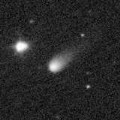
|
Now it is 12.4 mag (Nov. 4, Kunihiro Shima). It is expected to brighten up to 7 mag in 2017 summer. In the Northern Hemisphere, it keeps observable in good condition until the highlight while the comet will be brightening. In the Southern Hemisphere, it is not observable until early 2017.
Date(TT) R.A. (2000) Decl. Delta r Elong. m1 Best Time(A, h)
Nov. 26 13 14.60 44 54.0 3.047 2.980 76 11.9 2:58 (230,-23)
Dec. 3 13 29.98 44 37.1 2.931 2.913 79 11.7 2:54 (230,-22)
|

|
New comet. Brightening rapidly. Now it is very bright as 11.6 mag (Nov. 25, Juan Jose Gonzalez). It will approach to the sun down to 0.3 a.u. on Jan. 14. It may brighten up to 7 mag. In the Northern Hemisphere, it keeps observable in good condition in the morning sky until early January while the comet will be brightening. It is not observable at all in the Southern Hemisphere.
Date(TT) R.A. (2000) Decl. Delta r Elong. m1 Best Time(A, h)
Nov. 26 12 36.89 50 7.0 0.832 1.233 84 12.5 2:58 (222,-20)
Dec. 3 13 53.91 45 29.7 0.751 1.099 77 11.8 2:54 (231,-26)
|
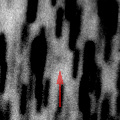
|
It will approach to the earth down to 0.08 a.u. to the earth in mid February, and it is expected to be observable at 6 mag in good condition. Now it is 16.4 mag (Nov. 6, A. Chapman). It will brighten rapidly after this, but it keeps very low in the evening sky for a while. It will be unobservable temporarily in January. Then it keeps observable in good condition after mid February.
Date(TT) R.A. (2000) Decl. Delta r Elong. m1 Best Time(A, h)
Nov. 26 19 6.01 -25 4.9 1.341 0.881 41 13.6 20:36 ( 70, 16)
Dec. 3 19 27.62 -24 29.7 1.246 0.783 38 12.2 20:45 ( 69, 13)
|
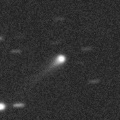
|
It brightened very rapidly and became brighter than expected. Now it is very bright as 12.5 mag (Nov. 1, Chris Wyatt). It is not observable already in the Southern Hemisphere. It will be unobservable soon also in the Northern Hemisphere.
Date(TT) R.A. (2000) Decl. Delta r Elong. m1 Best Time(A, h)
Nov. 26 18 16.93 -16 25.0 2.800 2.018 30 13.1 20:36 ( 71, 1)
Dec. 3 18 34.24 -15 57.2 2.844 2.029 28 13.3 20:45 ( 68, -3)
|
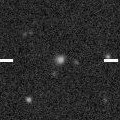
|
Appearing in the morning sky. Now it is 14.1 mag (Nov. 19, Ken-ichi Kadota). It is expected to brighten up to 7 mag in 2017 spring. But it locates somewhat low at the high light.
Date(TT) R.A. (2000) Decl. Delta r Elong. m1 Best Time(A, h)
Nov. 26 13 56.93 -14 54.3 3.440 2.650 31 13.4 2:58 (288, 1)
Dec. 3 14 9.17 -15 53.7 3.306 2.569 35 13.2 2:54 (287, 4)
|
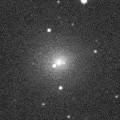
|
Now it is bright as 12.2 mag (Nov. 4, Seiichi Yoshida). It will be getting higher gradually after this also in the Southern Hemisphere. But it will be fading after this.
Date(TT) R.A. (2000) Decl. Delta r Elong. m1 Best Time(A, h)
Nov. 26 12 18.57 -5 47.5 2.043 1.725 57 13.5 2:58 (266, 16)
Dec. 3 12 32.33 -7 22.4 2.026 1.767 60 13.7 2:54 (266, 19)
|

|
It was observed as bright as 12-13 mag from late October to early November. Now it is fainter than 13.6 mag (Nov. 22, Chris Wyatt). It will be unobservable in mid December.
Date(TT) R.A. (2000) Decl. Delta r Elong. m1 Best Time(A, h)
Nov. 26 19 42.32 -23 7.4 6.478 5.885 49 13.8 20:36 ( 76, 22)
Dec. 3 19 47.28 -22 49.6 6.558 5.883 43 13.9 20:45 ( 73, 15)
|
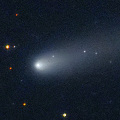
|
Now it is 12.7 mag (Nov. 4, Seiichi Yoshida). It will be getting higher gradually after this, but it will be fading.
Date(TT) R.A. (2000) Decl. Delta r Elong. m1 Best Time(A, h)
Nov. 26 11 31.51 -12 31.3 1.876 1.732 66 13.9 2:58 (265, 29)
Dec. 3 11 42.87 -14 32.2 1.857 1.776 69 14.1 2:54 (265, 33)
|

|
It brightened up to 8-9 mag from last winter to spring. Now it is fading. It has already faded down to 12.9 mag (July 23, Chris Wyatt). It is appearing in the morning sky.
Date(TT) R.A. (2000) Decl. Delta r Elong. m1 Best Time(A, h)
Nov. 26 13 4.90 -6 51.0 4.956 4.334 46 13.9 2:58 (274, 7)
Dec. 3 13 7.98 -7 48.5 4.924 4.392 52 14.0 2:54 (272, 11)
|

|
Now it is 14.2 mag (Nov. 22, Chris Wyatt). Distant object, but it keeps observable at 13-14 mag for a long time from 2015 to 2016.
Date(TT) R.A. (2000) Decl. Delta r Elong. m1 Best Time(A, h)
Nov. 26 0 33.56 -5 21.0 4.477 5.060 121 14.3 20:36 (167, 60)
Dec. 3 0 34.30 -5 22.4 4.586 5.074 114 14.4 20:45 (151, 57)
|

|
It brightened up to 11 mag from spring to summer. Now it is not observable. It will be observable at 16 mag again in 2017 spring.
Date(TT) R.A. (2000) Decl. Delta r Elong. m1 Best Time(A, h)
Nov. 26 16 9.93 -18 55.7 2.999 2.013 2 14.4 20:36 ( 48,-19)
Dec. 3 16 26.91 -19 38.4 3.035 2.052 3 14.5 2:54 (312,-18)
|

|
Now it is 15.4 mag (Oct. 9, Kunihiro Shima). It will brighten up to 14 mag from winter to spring in 2017, and it will be observable in excellent condition in the Northern Hemisphere. It keeps low in the Southern Hemisphere.
Date(TT) R.A. (2000) Decl. Delta r Elong. m1 Best Time(A, h)
Nov. 26 11 3.08 24 43.2 2.265 2.422 86 14.6 2:58 (230, 10)
Dec. 3 11 13.96 24 40.9 2.186 2.421 91 14.5 2:54 (228, 12)
|
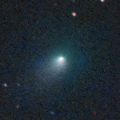
|
Now it is 14.4 mag (Oct. 22, Thomas Lehmann). It will be unobservable in December.
Date(TT) R.A. (2000) Decl. Delta r Elong. m1 Best Time(A, h)
Nov. 26 19 26.01 -29 11.2 2.452 1.893 45 14.9 20:36 ( 69, 22)
Dec. 3 19 45.87 -28 32.9 2.534 1.929 42 15.2 20:45 ( 68, 18)
|

|
Appearing in the morning sky in the Northern Hemisphere. Now it is fading. But it must be bright as 15 mag still now.
Date(TT) R.A. (2000) Decl. Delta r Elong. m1 Best Time(A, h)
Nov. 26 14 24.43 -16 50.1 2.751 1.900 24 15.0 2:58 (293, -3)
Dec. 3 14 40.96 -17 45.1 2.781 1.963 27 15.2 2:54 (293, -1)
|
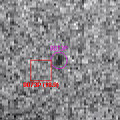
|
Now it is 17.1 mag (Nov. 11, Hidetaka Sato). It will brighten up to 12 mag from winter to spring. In the Northern Hemisphere, it keeps observable while the comet is brightening gradually. But it will be unobservable in late February. In the Southern Hemisphere, it keeps unobservable until December. But it keeps observable for a long time after late December.
Date(TT) R.A. (2000) Decl. Delta r Elong. m1 Best Time(A, h)
Nov. 26 13 21.63 0 20.2 2.276 1.739 45 15.5 2:58 (270, -1)
Dec. 3 13 39.94 -1 31.7 2.168 1.674 47 15.1 2:54 (271, 1)
|

|
Now it is bright as 15.9 mag (Nov. 5, Kunihiro Shima). It will be observable at 11 mag for a long time from 2017 to 2018. Now it is observable in excellent condition in the Southern Hemisphere. But it keeps low for a while in the Northern Hemisphere.
Date(TT) R.A. (2000) Decl. Delta r Elong. m1 Best Time(A, h)
Nov. 26 3 11.91 -41 0.0 5.207 5.719 116 15.2 22:48 ( 0, 84)
Dec. 3 3 6.76 -40 27.9 5.194 5.667 113 15.1 22:15 ( 0, 85)
|

|
It brightened up to 6 mag from last autumn to last winter. Now it is fading. It has already faded down to 15.2 mag (Nov. 2, Yuji Ohshima). It is observable in good condition in the Northern Hemisphere. It is not observable after this in the Southern Hemisphere.
Date(TT) R.A. (2000) Decl. Delta r Elong. m1 Best Time(A, h)
Nov. 26 4 9.70 56 34.7 4.206 5.041 144 15.1 23:45 (180, -2)
Dec. 3 3 55.55 55 56.6 4.269 5.110 145 15.2 23:04 (180, -1)
|

|
It has been lost since its discovery in 1978. In 2016, it is expected to return in excellent condition from autumn to winter.
Date(TT) R.A. (2000) Decl. Delta r Elong. m1 Best Time(A, h)
Nov. 26 22 43.12 -13 45.1 0.793 1.299 93 15.3 20:36 (117, 53)
Dec. 3 23 6.90 -10 29.9 0.823 1.313 92 15.5 20:45 (118, 48)
|

|
It was observed at 12-13 mag for a long time in the former half of 2016. It is not observable now. It will appear in the morning sky again at 16 mag in late December in the Northern Hemisphere, or in late January in the Southern Hemisphere.
Date(TT) R.A. (2000) Decl. Delta r Elong. m1 Best Time(A, h)
Nov. 26 16 28.94 2 0.7 4.643 3.759 23 15.4 20:36 ( 68,-31)
Dec. 3 16 34.87 0 57.0 4.694 3.807 23 15.5 2:54 (297,-35)
|

|
It approached to the Sun down to 0.45 a.u. on Oct. 10. It brightened up to 12.5-13.0 mag before the perihelion passage (Sept. 24, Michael Jager). After the perihelion passage, it was not detected, fainter than 14.0 mag on Nov. 16 (Michael Mattiazzo), fainter than 17 mag on Nov. 19 (Terry Lovejoy), fainter than 15.5 mag on Nov. 25 (Justin Tilbrook). It must have already disappeared. It will never be observable again in the Northern Hemisphere. In the Southern Hemisphere, it keeps extremely low after this. It has a very similar orbit to Comet C/1915 R1 ( Mellish ).
Date(TT) R.A. (2000) Decl. Delta r Elong. m1 Best Time(A, h)
Nov. 26 17 32.63 -41 1.5 1.919 1.132 26 15.5 20:36 ( 45, 9)
Dec. 3 18 4.06 -43 44.7 2.036 1.255 28 16.0 20:45 ( 43, 10)
|
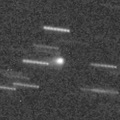
|
Now it is 15.7 mag (Oct. 31, Sandor Szabo). It will brighten up to 12-13 mag and will be observable in good condition in 2017 summer. In 2016, it keeps observable until winter when it will brighten up to 15.5 mag. It locates somewhat low in the Southern Hemisphere.
Date(TT) R.A. (2000) Decl. Delta r Elong. m1 Best Time(A, h)
Nov. 26 1 2.03 23 54.6 3.104 3.886 137 15.5 20:38 (180, 31)
Dec. 3 0 50.54 22 25.2 3.155 3.839 127 15.5 20:45 (168, 32)
|
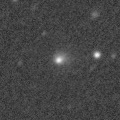
|
Now it is 16.3 mag (Nov. 5, Y. Sugiyama). It will brighten up to 15 mag in winter. But it will be getting lower gradually after this.
Date(TT) R.A. (2000) Decl. Delta r Elong. m1 Best Time(A, h)
Nov. 26 22 16.84 -4 2.5 1.676 1.955 90 15.7 20:36 (120, 41)
Dec. 3 22 25.58 -2 46.5 1.718 1.922 86 15.6 20:45 (116, 36)
|
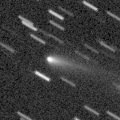
|
Now it is 15.5 mag (Oct. 31, Sandor Szabo). It will be observable at 15-16 mag in good condition from autumn to winter. It locates somewhat low in the Southern Hemisphere.
Date(TT) R.A. (2000) Decl. Delta r Elong. m1 Best Time(A, h)
Nov. 26 4 25.86 34 29.0 1.731 2.699 165 15.6 0:07 (180, 20)
Dec. 3 4 20.21 34 18.1 1.749 2.719 167 15.7 23:29 (180, 21)
|

|
Now it is 15.8 mag (Oct. 31, Sandor Szabo). It will brighten up to 14 mag from summer to winter in 2017. Then it will be observable in excellent condition in the Northern Hemisphere. In the Southern Hemisphere, it is hardly observable around the highlight.
Date(TT) R.A. (2000) Decl. Delta r Elong. m1 Best Time(A, h)
Nov. 26 22 49.54 -10 47.4 4.009 4.223 95 15.8 20:36 (122, 52)
Dec. 3 22 48.38 -9 46.2 4.086 4.183 88 15.8 20:45 (114, 44)
|
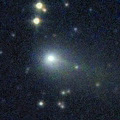
|
It brightened up to 12.5 mag in summer (Aug. 3, Marco Goiato). Now it is fading. It has already faded down to 15.0 mag (Oct. 31, Sandor Szabo). It keeps observable in good condition for a while.
Date(TT) R.A. (2000) Decl. Delta r Elong. m1 Best Time(A, h)
Nov. 26 21 44.87 -15 12.4 2.960 2.944 79 16.0 20:36 (102, 42)
Dec. 3 21 53.35 -14 36.3 3.081 2.973 74 16.1 20:45 ( 98, 37)
|
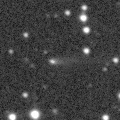
|
Now it is 16.8 mag (Oct. 7, D. Buczynski). It will be observable at 16-17 mag in good condition from autumn to winter. It locates low in the Southern Hemisphere.
Date(TT) R.A. (2000) Decl. Delta r Elong. m1 Best Time(A, h)
Nov. 26 7 31.41 25 1.4 3.072 3.816 133 16.1 2:58 (184, 30)
Dec. 3 7 29.37 25 18.2 2.994 3.809 140 16.0 2:42 (180, 30)
|
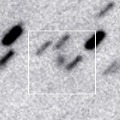
|
Now it is 15.8 mag (Oct. 22, Ken-ichi Kadota). It keeps 16-17 mag for a long time from 2016 to 2019. It keeps locating near by the equator.
Date(TT) R.A. (2000) Decl. Delta r Elong. m1 Best Time(A, h)
Nov. 26 9 22.57 1 37.3 9.452 9.691 101 16.1 2:58 (225, 43)
Dec. 3 9 22.94 1 34.7 9.335 9.684 107 16.1 2:54 (218, 47)
|
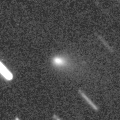
|
It had been lost for a long time over 200 years since its discovery in 1783. It brightened rapidly, and reached up to 13.9 mag in September (Spet. 1, Sandor Szabo). Now it is 14.5 mag (Nov. 4, Seiichi Yoshida). It will be fading after this. It is observable in excellent condition for a while in the Northern Hemisphere. It is not observable after this in the Southern Hemisphere.
Date(TT) R.A. (2000) Decl. Delta r Elong. m1 Best Time(A, h)
Nov. 26 4 38.12 50 37.2 1.014 1.931 149 16.2 0:20 (180, 5)
Dec. 3 4 17.68 53 37.8 1.049 1.957 148 16.5 23:25 (180, 1)
|

|
Now it is 16.5 mag (Nov. 4, D. Buczynski). It will brighten up to 15 mag and will be observable in good condition from autum to winter in 2017. In the Northern Hemisphere, it keeps observable in good condition for a long time while the comet will be brightening. It is not observable until 2017 summer in the Southern Hemisphere.
Date(TT) R.A. (2000) Decl. Delta r Elong. m1 Best Time(A, h)
Nov. 26 3 5.93 57 12.6 4.495 5.308 141 16.5 22:42 (180, -2)
Dec. 3 2 51.58 55 56.0 4.473 5.275 140 16.5 22:00 (180, -1)
|

|
Now it is 17.7 mag (Nov. 3, Ken-ichi Kadota). It will pass the perihelion on Mar. 10, 2017. In the Northern Hemisphere, it keeps observable in the evening sky until late February while the comet will be brightening up to 8.5 mag. In the Southern Hemisphere, it will appear in the morning sky in late March at 8 mag, then it keeps observable while the comet will be fading.
Date(TT) R.A. (2000) Decl. Delta r Elong. m1 Best Time(A, h)
Nov. 26 22 55.70 5 27.4 1.357 1.850 103 17.1 20:36 (138, 40)
Dec. 3 22 53.20 4 47.2 1.379 1.768 95 16.7 20:45 (128, 35)
|

|
It brightened up to 15 mag in early 2016. Now it is fading. It has already faded down to 16.9 mag (Nov. 4, D. Buczynski). In the Northern Hemisphere, it keeps observable in good condition for a long time until 2017 autumn when the comet will be fainter than 18 mag. It will never be observable after this in the Southern Hemisphere.
Date(TT) R.A. (2000) Decl. Delta r Elong. m1 Best Time(A, h)
Nov. 26 14 22.81 65 51.3 5.976 6.040 89 16.7 2:58 (210,-38)
Dec. 3 14 33.72 65 48.2 5.968 6.066 91 16.7 2:54 (210,-37)
|
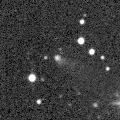
|
It brightened rapidly. Now it is 16.7 mag (Oct. 15, Ken-ichi Kadota). It is observable at 16.5 mag in good condition from autumn to winter.
Date(TT) R.A. (2000) Decl. Delta r Elong. m1 Best Time(A, h)
Nov. 26 22 46.78 -6 59.2 2.326 2.628 96 16.7 20:36 (125, 49)
Dec. 3 22 52.46 -6 1.7 2.406 2.618 91 16.8 20:45 (118, 43)
|

|
Now it is 17.3 mag (Nov. 7, Mt. Lemmon Survey). It will be observable at 17 mag in good condition in winter.
Date(TT) R.A. (2000) Decl. Delta r Elong. m1 Best Time(A, h)
Nov. 26 11 52.07 1 20.4 2.556 2.341 66 16.9 2:58 (256, 17)
Dec. 3 12 1.83 0 37.1 2.500 2.368 70 16.9 2:54 (254, 20)
|
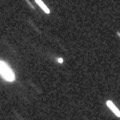
|
Now it is 16.7 mag (Oct. 3, A. Diepvens). It brightened rapidly, and became brighter than originally expected. It keeps 17 mag until 2017. In the Northern Hemisphere, it keeps observable in excellent condition for a long time. It is not observable in the Southern Hemisphere.
Date(TT) R.A. (2000) Decl. Delta r Elong. m1 Best Time(A, h)
Nov. 26 13 42.42 54 23.8 7.389 7.309 81 16.9 2:58 (223,-31)
Dec. 3 13 44.26 54 34.6 7.330 7.314 85 16.9 2:54 (221,-28)
|
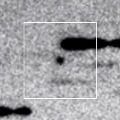
|
Now it is 16.7 mag (Nov. 3, iTelescope Observatory, Siding Spring). It keeps 16 mag for a long time from 2017 to 2018.
Date(TT) R.A. (2000) Decl. Delta r Elong. m1 Best Time(A, h)
Nov. 26 9 48.37 -12 7.3 5.878 5.962 90 17.1 2:58 (246, 49)
Dec. 3 9 46.66 -11 55.9 5.737 5.940 97 17.0 2:54 (239, 54)
|
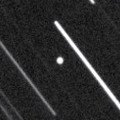
|
It brightened up to 14.9 mag in September (Sept. 29, Sandor Szabo). In the Northern Hemisphere, it keeps observable in excellent condition, but it will be fading after this. It keeps locating very low in the Southern Hemisphere.
Date(TT) R.A. (2000) Decl. Delta r Elong. m1 Best Time(A, h)
Nov. 26 23 5.28 26 8.6 1.108 1.733 111 17.1 20:36 (152, 23)
Dec. 3 23 14.23 23 58.8 1.243 1.794 106 17.4 20:45 (145, 22)
|

|
Now it is 17.1 mag (Nov. 6, CAO, San Pedro de Atacama). In the Northern Hemisphere, it will be observable at 17 mag in excellent condition in winter. It locates low in the Southern Hemisphere.
Date(TT) R.A. (2000) Decl. Delta r Elong. m1 Best Time(A, h)
Nov. 26 7 20.16 33 40.9 2.613 3.391 135 17.2 2:58 (181, 21)
Dec. 3 7 18.62 34 0.2 2.556 3.394 142 17.2 2:31 (180, 21)
|

|
It will pass the perihelion in 2019. However, it has not been brightening since the discovery in 2010. Now it is 17.3 mag (Nov. 4, D. Buczynski). It keeps observable in excellent condition in the Northern Hemisphere. It is not observable in the Southern Hemisphere.
Date(TT) R.A. (2000) Decl. Delta r Elong. m1 Best Time(A, h)
Nov. 26 4 16.61 61 50.2 8.951 9.718 139 17.2 23:53 (180, -7)
Dec. 3 4 11.54 61 59.7 8.924 9.699 139 17.2 23:21 (180, -7)
|
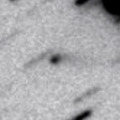
|
Now it is 17.9 mag (Nov. 2, Purple Mountain Observatory, XuYi Station). It was observed at 17 mag last winter. It will be observable at 17 mag again next winter. It is observable in good condition in the Northern Hemisphere. But it locates low in the Southern Hemisphere.
Date(TT) R.A. (2000) Decl. Delta r Elong. m1 Best Time(A, h)
Nov. 26 11 4.85 16 13.9 3.827 3.834 83 17.3 2:58 (237, 16)
Dec. 3 11 10.06 17 11.7 3.737 3.852 89 17.2 2:54 (232, 18)
|

|
It brightened up to 15 mag from late 2014 to early 2016. Now it is fading slowly. Now it is 17.1 mag (Nov. 5, Y. Sugiyama). In the Northern Hemisphere, it keeps observable in good condition for a long time, although it will be low temporarily in winter. It is not observable after this in the Southern Hemisphere.
Date(TT) R.A. (2000) Decl. Delta r Elong. m1 Best Time(A, h)
Nov. 26 21 18.68 34 8.2 5.432 5.556 92 17.3 20:36 (137, 4)
Dec. 3 21 17.97 33 25.0 5.561 5.592 86 17.4 20:45 (131, -1)
|
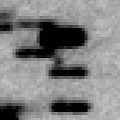
|
It will be observable at 17.5 mag in good condition from winter to spring.
Date(TT) R.A. (2000) Decl. Delta r Elong. m1 Best Time(A, h)
Nov. 26 12 58.23 -0 52.4 2.736 2.239 50 17.4 2:58 (268, 5)
Dec. 3 13 10.86 -2 6.7 2.676 2.244 54 17.4 2:54 (267, 8)
|
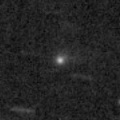
|
Now it is 17.0 mag (Nov. 2, Mitsunori Tsumura). It tends to be brightest after the perihelion passage. It is observable at 17.5 mag in good condition from autumn to winter.
Date(TT) R.A. (2000) Decl. Delta r Elong. m1 Best Time(A, h)
Nov. 26 2 9.28 -0 39.2 2.274 3.126 143 17.5 21:46 (180, 56)
Dec. 3 2 7.02 -0 31.6 2.345 3.137 136 17.6 21:16 (180, 55)
|

|
Now it is 17.3 mag (Nov. 9, L. Elenin). It keeps 17 mag for a long time from 2016 autumn to 2017 summer, and it keeps observable good condition all through that period in the Southern Hemisphere. In the Northern Hemisphere, it will never be observable again after this.
Date(TT) R.A. (2000) Decl. Delta r Elong. m1 Best Time(A, h)
Nov. 26 3 37.25 -61 5.2 2.297 2.620 97 17.5 23:12 ( 0, 64)
Dec. 3 3 16.24 -62 50.1 2.341 2.596 93 17.5 22:23 ( 0, 62)
|

|
Now it is 17.1 mag (Nov. 5, Y. Sugiyama). It will be fainter than 18 mag in January.
Date(TT) R.A. (2000) Decl. Delta r Elong. m1 Best Time(A, h)
Nov. 26 23 8.20 1 14.1 1.893 2.344 104 17.6 20:36 (139, 45)
Dec. 3 23 15.31 1 35.1 1.959 2.331 99 17.6 20:45 (131, 41)
|
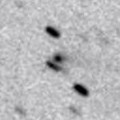
|
Now it is 17.0 mag (Nov. 10, Purple Mountain Observatory, XuYi Station). It keeps observable at 17.5 mag in good condition from autumn to winter.
Date(TT) R.A. (2000) Decl. Delta r Elong. m1 Best Time(A, h)
Nov. 26 3 16.74 15 48.7 2.097 3.066 166 17.6 22:53 (180, 39)
Dec. 3 3 12.71 15 25.4 2.124 3.063 158 17.6 22:22 (180, 40)
|

|
Now it is 17.4 mag (Nov. 5, Y. Sugiyama). First return of a new periodic comet which brightened up to 16.5 mag in 2008. The condition of this apparition is very good. It was expected to brighten up to 15.5 mag in autumn and will be observable in good condition. But actually, it is fainter than originally expected by 2 mag.
Date(TT) R.A. (2000) Decl. Delta r Elong. m1 Best Time(A, h)
Nov. 26 23 21.40 -0 42.3 1.813 2.302 106 17.7 20:36 (141, 49)
Dec. 3 23 25.23 0 52.1 1.897 2.303 101 17.8 20:45 (133, 43)
|

|
It brightened up to 13-14 mag from 2014 to 2015. Now it is fading. It has already faded down to 18.0 mag (Nov. 5, K. Hills). It will be fainter than 18 mag in December.
Date(TT) R.A. (2000) Decl. Delta r Elong. m1 Best Time(A, h)
Nov. 26 23 0.29 -8 4.2 5.997 6.232 99 17.7 20:36 (128, 52)
Dec. 3 23 1.96 -7 57.9 6.156 6.277 92 17.8 20:45 (119, 46)
|
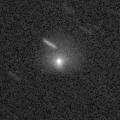
|
It has brightened in outburst up to 14 mag twice, in 2006 January and 2011 May. Third outburst occured on Aug. 28, and it brightened up to 14.8 mag (Aug. 30, Juan Jose Gonzalez). It has already faded down to 17.4 mag (Nov. 2, Katsumi Yoshimoto). It is observable in good condition for a while.
Date(TT) R.A. (2000) Decl. Delta r Elong. m1 Best Time(A, h)
Nov. 26 1 1.73 4 1.1 5.737 6.436 131 17.8 20:39 (180, 51)
Dec. 3 1 1.03 3 56.9 5.840 6.450 124 17.9 20:45 (167, 50)
|
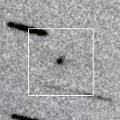
|
Now it is 17.5 mag (Oct. 24, D. Buczynski). It will brighten up to 16 mag in 2017 summer, but it is not observable around the high light. It is observable at 17-18 mag until March in the Southern Hemisphere, or until April in the Northern Hemisphere.
Date(TT) R.A. (2000) Decl. Delta r Elong. m1 Best Time(A, h)
Nov. 26 2 10.45 0 59.0 1.986 2.852 145 17.9 21:47 (180, 54)
Dec. 3 2 6.29 0 58.0 2.009 2.816 137 17.9 21:15 (180, 54)
|
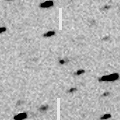
|
Now it is 17.8 mag (Nov. 5, Catalina Sky Survey). First return of a new periodic comet discovered in 2005. In the Northern Hemisphere, it will be observable in excellent condition in winter. It locates somewhat low in the Southern Hemisphere. It is fainter than originally expected by 1 mag.
Date(TT) R.A. (2000) Decl. Delta r Elong. m1 Best Time(A, h)
Nov. 26 3 39.49 22 32.3 1.843 2.825 173 18.1 23:16 (180, 32)
Dec. 3 3 35.14 22 7.8 1.863 2.828 165 18.1 22:44 (180, 33)
|
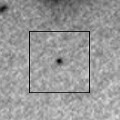
|
Now it is 18.9 mag (Oct. 27, Ken-ichi Kadota). First return of a new periodic comet discovered in 2007. It was expected to brighten up to 16.5 mag and will be observable in good condition from autumn to winter. But actually, it is fainter than originally expected by 2 mag.
Date(TT) R.A. (2000) Decl. Delta r Elong. m1 Best Time(A, h)
Nov. 26 3 13.36 -12 11.5 1.444 2.318 144 18.4 22:50 (180, 67)
Dec. 3 3 8.43 -11 2.1 1.456 2.302 140 18.4 22:17 (180, 66)
|
|
![]()
 C/2014 W2 ( PanSTARRS )
C/2014 W2 ( PanSTARRS ) C/2016 R3 ( Borisov )
C/2016 R3 ( Borisov ) C/2015 VL62 ( Lemmon-Yeung-PanSTARRS )
C/2015 VL62 ( Lemmon-Yeung-PanSTARRS ) 93P/Lovas 1
93P/Lovas 1 56P/Slaughter-Burnham
56P/Slaughter-Burnham C/2016 N4 ( MASTER )
C/2016 N4 ( MASTER ) 53P/Van Biesbroeck
53P/Van Biesbroeck 74P/Smirnova-Chernykh
74P/Smirnova-Chernykh C/2014 B1 ( Schwartz )
C/2014 B1 ( Schwartz ) 226P/Pigott-LINEAR-Kowalski
226P/Pigott-LINEAR-Kowalski C/2015 V1 ( PanSTARRS )
C/2015 V1 ( PanSTARRS ) 2P/Encke
2P/Encke C/2013 V4 ( Catalina )
C/2013 V4 ( Catalina ) 188P/LINEAR-Mueller
188P/LINEAR-Mueller 118P/Shoemaker-Levy 4
118P/Shoemaker-Levy 4 C/2014 R3 ( PanSTARRS )
C/2014 R3 ( PanSTARRS ) C/2016 A1 ( PanSTARRS )
C/2016 A1 ( PanSTARRS ) (3200) Phaethon
(3200) Phaethon P/2015 TP200 ( LINEAR )
P/2015 TP200 ( LINEAR ) C/2010 U3 ( Boattini )
C/2010 U3 ( Boattini ) C/2015 X7 ( ATLAS )
C/2015 X7 ( ATLAS ) C/2014 A4 ( SONEAR )
C/2014 A4 ( SONEAR ) 94P/Russell 4
94P/Russell 4 136P/Mueller 3
136P/Mueller 3 P/2016 S1 ( PanSTARRS )
P/2016 S1 ( PanSTARRS ) 343P/2016 P3 ( NEAT-LONEOS )
343P/2016 P3 ( NEAT-LONEOS ) 128P/Shoemaker-Holt 1
128P/Shoemaker-Holt 1 338P/2016 N1 ( McNaught )
338P/2016 N1 ( McNaught ) C/2012 F3 ( PanSTARRS )
C/2012 F3 ( PanSTARRS ) 174P/(60558) 2000 EC98 ( Echeclus )
174P/(60558) 2000 EC98 ( Echeclus ) 30P/Reinmuth 1
30P/Reinmuth 1 P/2016 Q1 ( Read )
P/2016 Q1 ( Read ) P/2016 R1 ( Catalina )
P/2016 R1 ( Catalina )![]()

















































